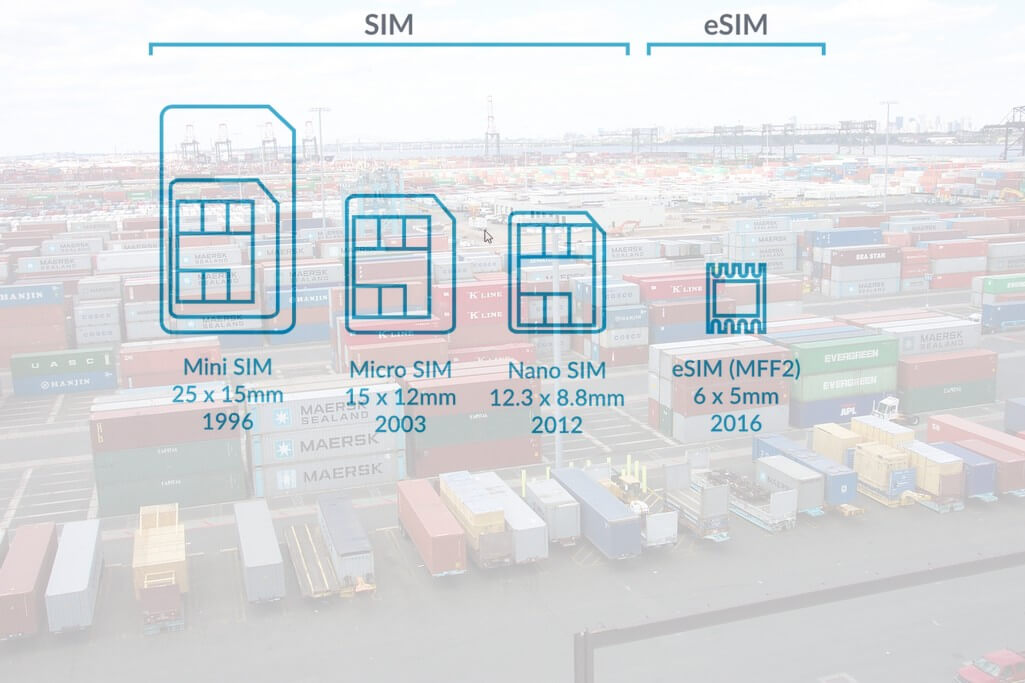ARM’s new white paper argues that the company’s new eSIMs can utilise internet of things (IoT) technology to simplify and streamline complex logistics processes.
The UK tech giant claims that the water-resistant eSIMs, which are 70% smaller than the nano-sims currently used inside mobile devices, can simplify international sales and give manufacturers a competitive edge. This is down to the fact that the eSIMs can be embedded during manufacture and automatically activated to work “out-of-the-box”, regardless of the region.
Embedded, seamless technology
To me more precise, ARM says the eSIMs can be embedded into multiple items including a carrying container, pallet, crate, transporting vehicle, sensors in loading docks and fulfilment centres, or even in a product itself. The technology also allows for more advanced tracking and analytics of logistics operations thanks to the ease at which data can be accessed and shared.
As it stands, every cellular-enabled IoT device needs its own SIM to ensure connectivity and compatibility with regional mobile networks. ARM argues that this necessitates the manufacturing and shipping of numerous and almost identical SKUs, as well as the management of mobile network operators in each territory. As a consequence, costs are higher, scalability is restricted and things are made complicated for both manufacturers and end users.
If you produce smart logistics devices, eSIM technology can help you make international selling more straight-forward. No one operator can provide truly global connectivity, meaning logistics manufacturers that want to provide their product globally must contract with more than one operator to secure operator-specific SIM cards. Without eSIM, manufacturers must create and maintain separate product lines for each mobile network operator to account for the different SIM cards required, despite the fact that the underlying device itself is exactly the same. eSIM enables single-SKU manufacturing for IoT devices. ARM White Paper ‘eSIM: Giving Manufacturers the Competitive Edge in Logistics’
However, ARM believes this can be remedied by embedded eSIMs, which would allow a management platform to facilitate the activation and assignment of network operators – without the need for the physical SIM card to be touched at all. The technology would thereby open up new regional and global markets to manufacturers, as they would no longer need to create and maintain additional localized product lines. Moreover, as only one device need be manufactured and sold to the world, it would create new streams of revenue and cost savings.
What is the best practice for implementing this technology?
According to ARM, the first step for firms seeking to take advantage of eSIMs is to select an IoT connectivity provider, whose role is to supply both the eSIM and the network of mobile network operators needed for worldwide coverage.
Before making this decision, ARM stress the three key prerequisites are as follows:
- Cost-efficiency when evaluating partners
- Seeking consolidation
- Looking for a trusted partner ecosystem
With regards to the 1st prerequisite, ARM states that success hangs on how flexible networks can be leveraged, easily manage device connectivity, and embrace a cost-efficient single vendor approach that provides access to the world’s mobile network operators.
The 2nd prerequisite relates to connectivity management. ARM believe one’s goal here should always be a “single pane of glass.” Preference should be given to solutions that can consolidate data from a wide variety of sources.
Finally, ARM adds that when considering solutions and providers, it is not merely enough to look at the technology on offer. As connectivity management has a strong bearing on competitive success, the right provider shall combine superior technologies with experience, an ecosystem of partnerships, and a commitment to your business succeeding.
Photocredit: Captain Albert E. Theberge / Wikimedia Commons (image edited)









